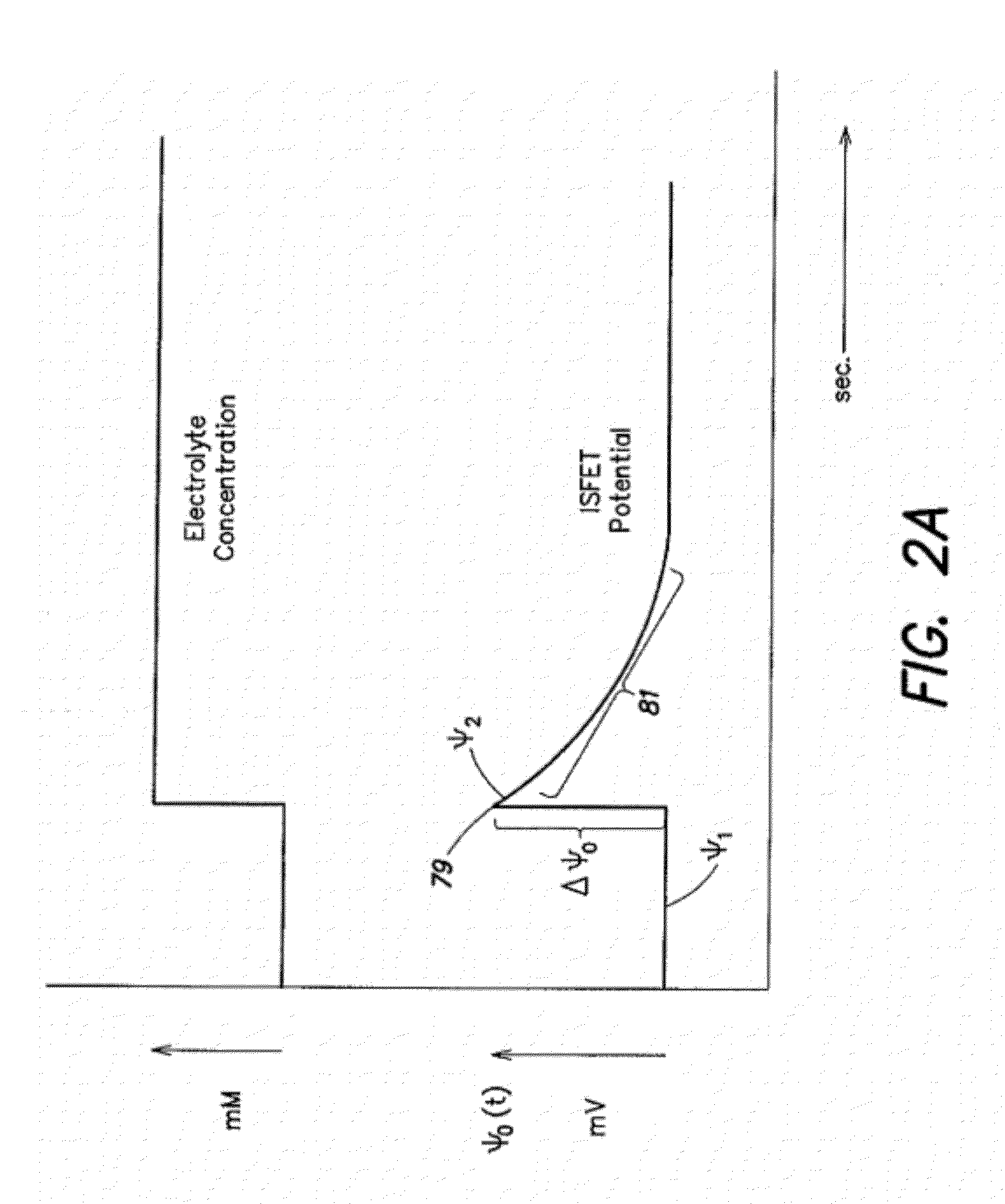Methods and Apparatus for Detecting Molecular Interactions Using FET Arrays
a technology of molecular interactions and arrays, applied in the field of detection and measurement of one or more analytes, can solve the problems of unpredictability of the transmission gate operation, or preclude operation entirely, and achieve the effects of reducing porosity, increasing passivation layer density, and improving chemical vapor deposition
- Summary
- Abstract
- Description
- Claims
- Application Information
AI Technical Summary
Benefits of technology
Problems solved by technology
Method used
Image
Examples
Embodiment Construction
[0161]Following below are more detailed descriptions of various concepts related to, and embodiments of, inventive methods and apparatus relating to large scale chemFET arrays for detection and / or measurement or analytes. It should be appreciated that various concepts introduced above and discussed in greater detail below may be implemented in any of numerous ways, as the disclosed concepts are not limited to any particular manner of implementation. Examples of specific implementations and applications are provided primarily for illustrative purposes.
[0162]Various inventive embodiments according to the present disclosure are directed at least in part to a semiconductor-based / microfluidic hybrid system that combines the power of microelectronics with the biocompatibility of a microfluidic system. In some examples below, the microelectronics portion of the hybrid system is implemented in CMOS technology for purposes of illustration. It should be appreciated, however, that the disclosu...
PUM
 Login to View More
Login to View More Abstract
Description
Claims
Application Information
 Login to View More
Login to View More - R&D
- Intellectual Property
- Life Sciences
- Materials
- Tech Scout
- Unparalleled Data Quality
- Higher Quality Content
- 60% Fewer Hallucinations
Browse by: Latest US Patents, China's latest patents, Technical Efficacy Thesaurus, Application Domain, Technology Topic, Popular Technical Reports.
© 2025 PatSnap. All rights reserved.Legal|Privacy policy|Modern Slavery Act Transparency Statement|Sitemap|About US| Contact US: help@patsnap.com



